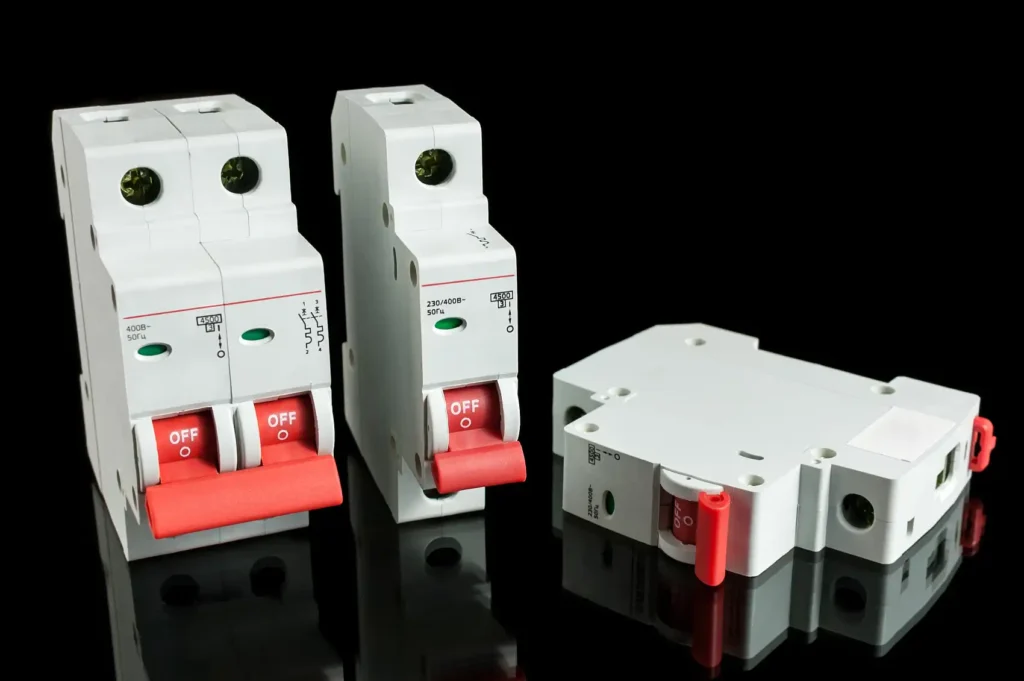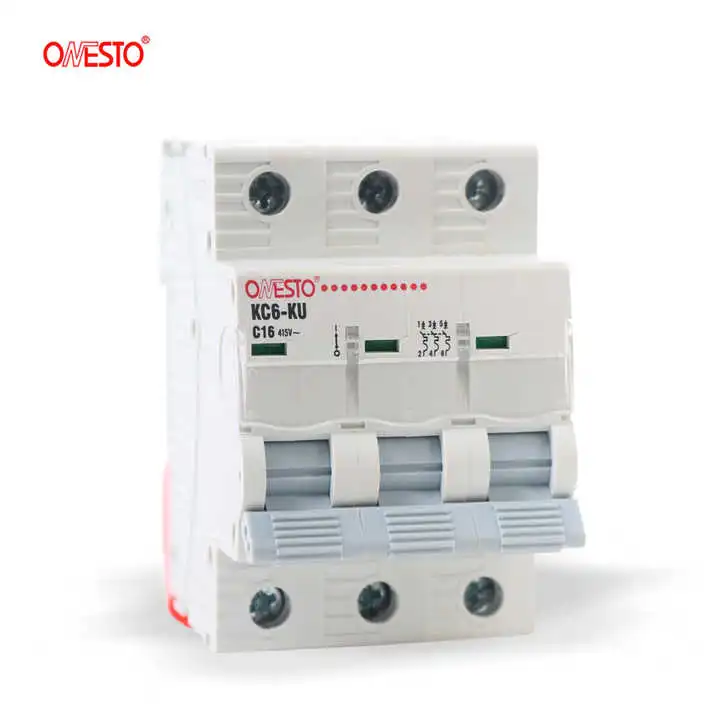In electrical protection, miniature circuit breakers (MCBs) are the most basic elements that ensure circuit safety. But the majority of users are unclear about the difference between alternating current (AC) and direct current (DC) MCBs. This article will extensively analyze the difference between the two from technical principles, structural compositions, application conditions, etc., to help readers properly choose the appropriate circuit breaker
Core difference: Differences in arc extinguishing principles
1. Communicate the arc extinguishing mechanism of MCB
The direction of AC current will periodically change (such as 50/60Hz), and its current waveform has a natural “zero crossing point”. When breaking the circuit, the arc will naturally extinguish with the zero crossing of the current. Therefore, the design of the arc extinguishing device for MCB communication is relatively simple, mainly achieved by dividing the arc with metal grids and accelerating cooling
2. Arc extinguishing mechanism of DC MCB
DC current has no zero crossing characteristic, and the arc needs to be forcibly extinguished. DC MCB requires more complex arc extinguishing techniques, such as:
- Series contact design: By increasing the distance between contacts to elongate the arc and accelerate energy dissipation (commonly used in photovoltaic system protection)
- Magnetic blow out arc: using a magnetic field to introduce the arc into the arc extinguishing chamber, and dividing and cooling it through metal grids
- Special arc extinguishing materials: such as high-temperature resistant PA66 plastic and reinforced arc extinguishing chamber structure
Design and performance differences
| Feature | AC MCB | DC MCB |
| Contact Gap | Short, depends on natural zerocrossing | Long, requires arc-extinguishing elongation |
| Arc ExtinguishingChamber | Simple pole-piece structure | Multi-layer pole pieces + magnetic blow coil |
| Rated Voltage | Typically 230/400V AC | Up to 1000V DC (e.g., for photovoltaic systems) |
| Breaking Capacity | 6kA (standard) | 10kA or higher (for high-demand scenarios) |
Application scenarios and selection suggestions
1. Typical applications of MCB communication
Home power distribution system (such as lighting, socket circuits).
Industrial AC motor control (380V AC).
2. Dedicated scenarios for DC MCB
Photovoltaic system: protects the DC line between the solar panel and the inverter (requires UL489B certification)
Energy storage system: battery charging and discharging circuit (recommended non-polar MCB)
Electric vehicle charging station: High voltage DC circuit above 72V
3. Misconceptions and risks in selection
The risk of AC MCB replacing DC: When AC MCB is used in DC circuits, insufficient arc extinguishing capability may cause contact burnout or even fire (especially in systems above 48V)
Brand selection: ONESTO’s miniature circuit breakers offer a variety of styles, supporting personalized customization and OEM services. We are committed to providing our customers with the most competitive prices and offering a two-year warranty guarantee.
Cost and lifespan analysis
DC MCB has a higher cost due to its complex arc extinguishing structure and materials (such as silver alloy contacts). For example, in products of the same specifications, the price of DC MCB is about 1.5-2 times that of AC
The electrical lifespan of AC MCBs is usually 10000 cycles, while DC MCBs require higher durability design in frequent disconnection scenarios (such as 20000 mechanical lifetimes)
Here are some information that you may have just been interested in:
How to Calculate the Load Capacity of a 32 Amp MCB
Comprehensive analysis of miniature circuit breakers
The difference between DC MCCB and AC MCCB




